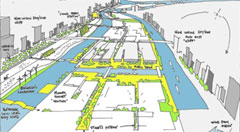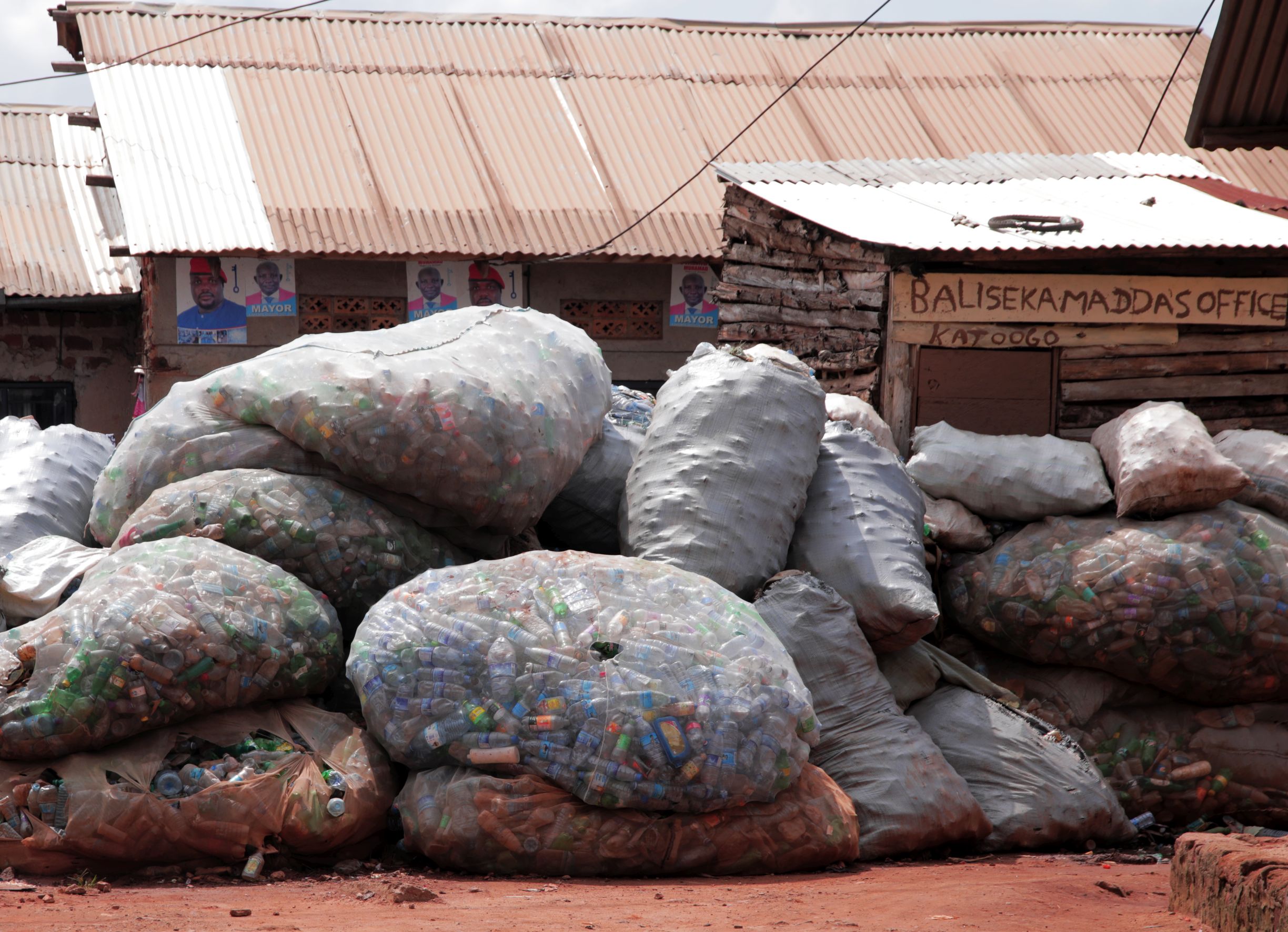- Who We Are
- How We Work
- Regional / Country Initiatives
- Legacy
- Core Themes
- Working Groups
- Portfolio & Results
- Newsroom
- Resources
Eco2 Cities: A Model for Sustainable Urban Development
The Eco2 Cities Initiative provides cities with a bottom-up analytical and operational framework that can be adapted to each city’s local conditions and needs. It also helps cities gain access to financial resources for strategic infrastructure investment
Developing countries are projected to triple their built-up urban areas between 2000 and 2030, despite severe resource constraints. To help them manage this transformation in an ecologically and economically sustainable and socially inclusive way, the World Bank–with the support of the Cities Alliance (using Japanese funds)–developed the Eco2 Cities Initiative in 2009. It is now globally disseminating the concept and helping several Asian countries adopt them.
Eco2 Cities enhance their citizens’ well-being through integrated urban planning and management that harnesses the benefits of ecological systems, while protecting them for future generations. They also enhance their resource efficiency while reducing pollution and waste. This improves their economic competitiveness and resilience, strengthens their fiscal capacity, and provides significant benefits to the poor.
How the Eco2 Cities Initiative works
The Eco2 Cities Initiative provides cities with a bottom-up analytical and operational framework that can be adapted to each city’s local conditions and needs. It also includes methods and tools that make it easier to integrate the Eco2 approach in city planning and management, and it helps cities gain access to financial resources for strategic infrastructure investments.
The Eco2 framework has been structured around the following key principles:
-- A city-based approach. Enables local governments to lead a process that takes into account their specific circumstances;
-- An expanded platform for collaborative design and decision-making. Accomplishes sustained synergy by coordinating and aligning the actions of key stakeholders;
-- A one-system approach. Enables cities to realize the benefits of integration by planning and managing the whole urban system; and
-- An investment framework that values sustainability and resiliency. Incorporates lifecycle cost-benefit analysis, the value of all capital assets (manufactured, natural, human, and social), and a broader scope of risk assessments for resilience.

Representatives of two government departments used the Eco2 “Design Charette” tool to create this green transport system design concept for Ho Chi Minh City.
These underpin a set of core elements that each city may transform into a unique action plan, called an “Eco2 pathway.” Cities may begin incrementally, by engaging in capacity building and data management and by initially concentrating on their most critical priorities.
Eco2 pilot projects are currently being rolled out in several Asian countries. The initial efforts have focused on building capacity, designing cross-sector catalyst projects, and engaging key national ministries. High-ranking government officials in Indonesia and Vietnam now agree on the need for an integrated development approach, and Phillipines officials are considering applying the Eco2 framework to low-income housing initiatives.
This has led the Bank to formulate a plan to lend approximately USD400 million to three Indonesian cities to increase their capacity to carry out effective planning and management and to design and run some catalyst projects based on the Eco2 Cities concept.
Two ongoing projects in Vietnam (whose funding amounts to USD465 million) are also using the Eco2 framework to design green transportation systems that promote mass transit and integrate it with the development of surrounding land. The collaborative process using the Eco2 “Design Charrette” tool has been revolutionary: In the case of Ho Chi Minh City, government departments (which typically remain siloed) jointly developed a design within a week.
On a global basis, Eco2 Cities is increasingly focusing on knowledge dissemination. The initiative has been presented at conferences, and a book has been translated into several languages. These efforts have inspired some nations to adopt Eco2 cities initiatives as national programs and to organize Eco2 Cities workshops and study tours. The Eco2 Cities Guide was published, as well as a report on Japan’s experiences with urban and environmental management. With the support of the Royal Norwegian Ministry of Foreign Affairs, the Bank also published a book about transit and land use integration. And it is helping an Asian university consortium promote sustainable urban development through their research symposia and sustainable urban development courses.
Best Practices
Almost all Eco2 solutions are taking place in cities with a committed leadership and a citywide approach. A city’s success depends on how effectively and creatively it uses and develops the levers within its control, such as its human and technical capacity, its knowledge of local realities, and its formal urban planning tools and municipal finance strategies.
A city’s capacity to act also depends on levers beyond its control, such as the cooperation of national or state governments, thus requiring city leadership to occur at many levels, including the regional. Cities are centres of resource consumption, and resource efficiency is driven by how well the city is integrated into the local and regional ecologies. Lastly, to act effectively, a city may need technical, administrative, and financial support, including knowledge, skills, and tools.
It is often appropriate to develop an overarching planning framework, including a growth management strategy, to guide all other plans. An Eco2 pathway may feature many different projects involving players from the private, public, civil, and other sectors.
By extending the platform for decision-making to include planning institutes, and by encouraging alignment among stakeholders, the governance of a city becomes less vulnerable to the inevitable disruptions created by elections, political incidents, and the manipulation of policy by special-interest groups. An expanded platform for collaboration compensates for the inherent short-term mindset often associated with mayoral terms and the next election.
|

